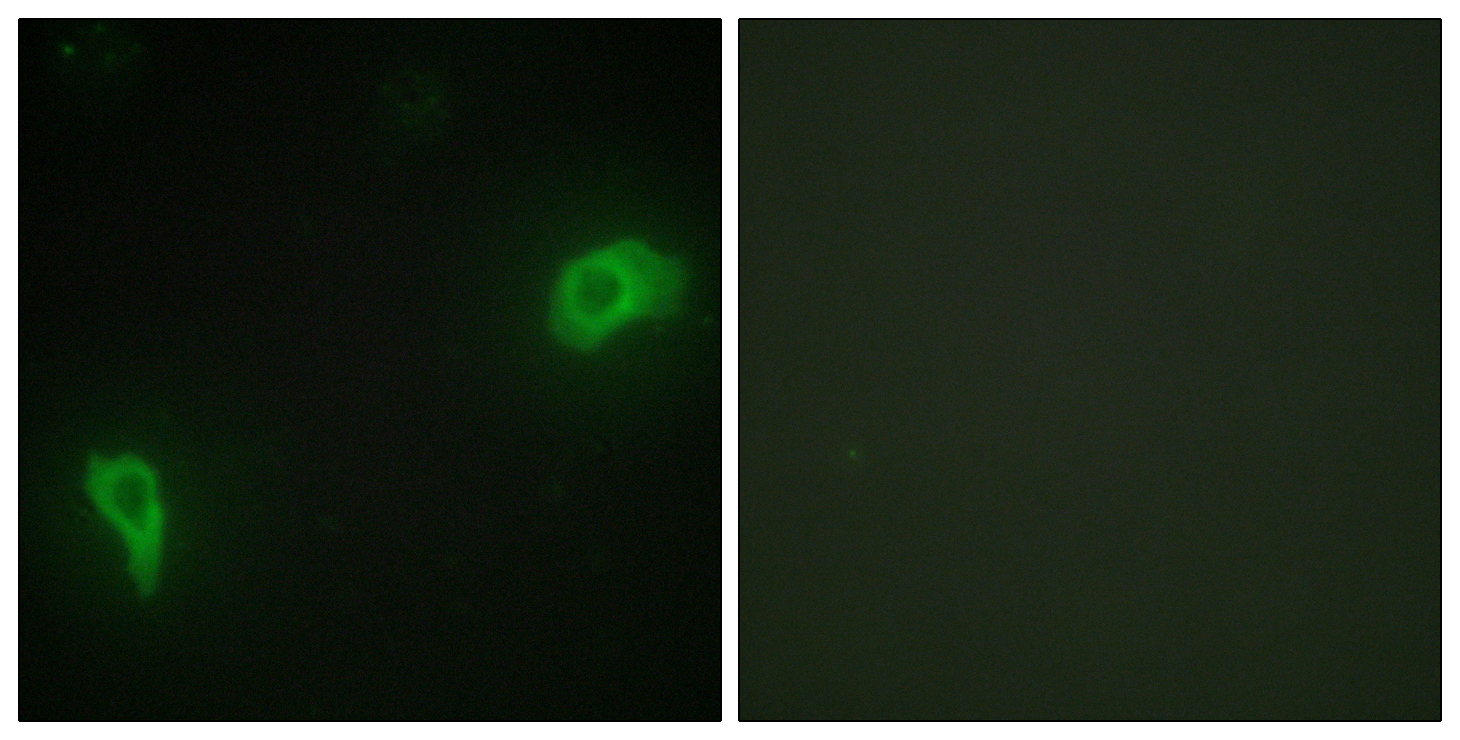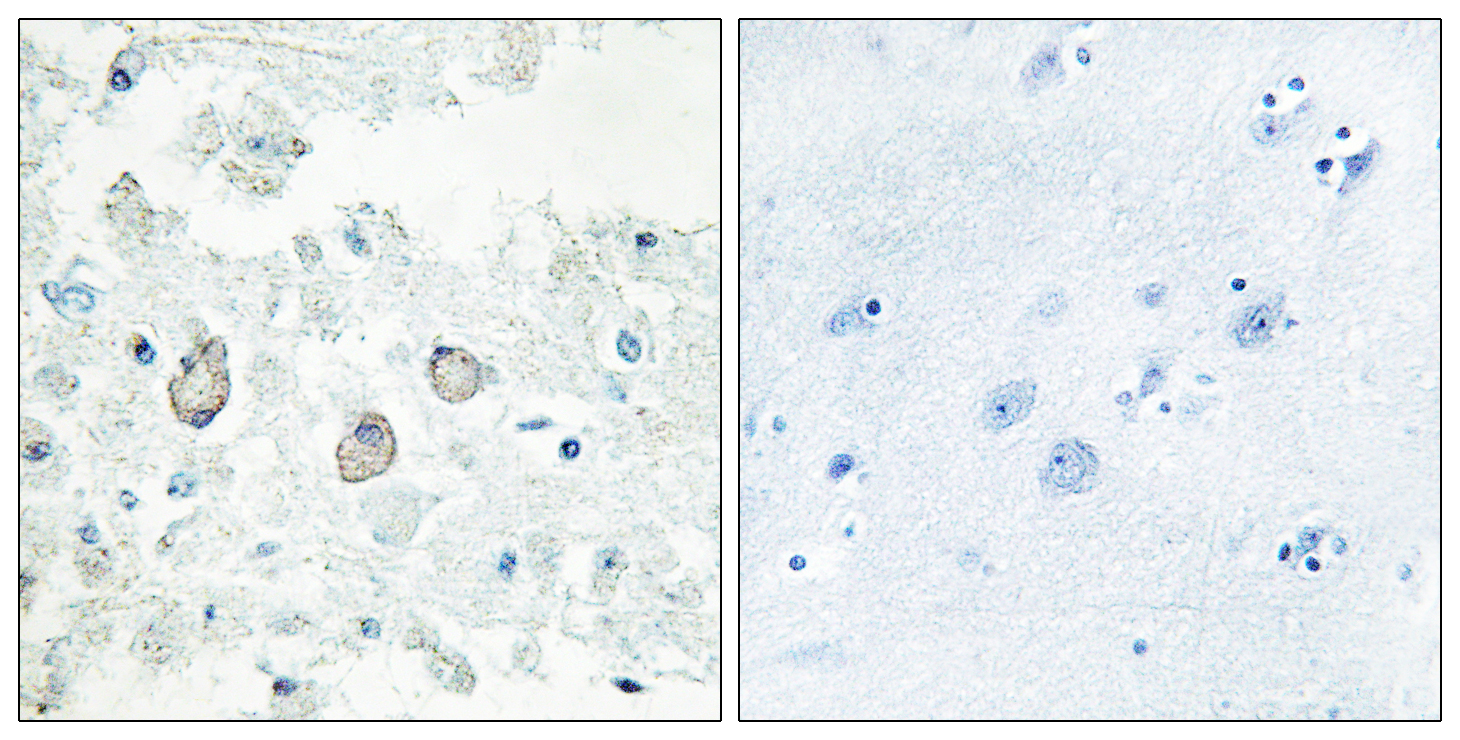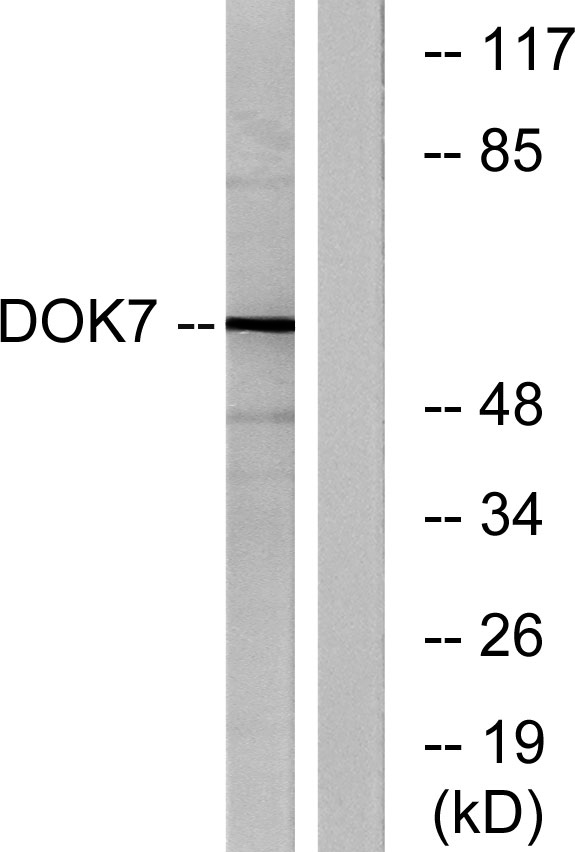产品名称
Dok-7 Rabbit Polyclonal Antibody
别名
DOK7; C4orf25; Protein Dok-7; Downstream of tyrosine kinase 7
存储缓冲液
Liquid in PBS containing 50% glycerol, 0.5% BSA and 0.02% New type preservative N.
Human Gene Link
http://www.ncbi.nlm.nih.gov/sites/entrez?db=gene&term=285489
Human Swissprot No.
Q18PE1
Human Swissprot Link
http://www.uniprot.org/uniprotkb/Q18PE1/entry
Mouse Gene Link
http://www.ncbi.nlm.nih.gov/sites/entrez?db=gene&term=231134
Mouse Swissprot No.
Q18PE0
Mouse Swissprot Link
http://www.uniprot.org/uniprot/Q18PE0
免疫原
The antiserum was produced against synthesized peptide derived from human DOK7. AA range:10-59
特异性
Dok-7 Polyclonal Antibody detects endogenous levels of Dok-7 protein.
稀释度
WB 1:500 - 1:2000. IHC 1:100 - 1:300. IF 1:200 - 1:1000. ELISA: 1:20000. Not yet tested in other applications.
宿主
Polyclonal, Rabbit,IgG
背景介绍
docking protein 7(DOK7) Homo sapiens The protein encoded by this gene is essential for neuromuscular synaptogenesis. The protein functions in aneural activation of muscle-specific receptor kinase, which is required for postsynaptic differentiation, and in the subsequent clustering of the acetylcholine receptor in myotubes. This protein can also induce autophosphorylation of muscle-specific receptor kinase. Mutations in this gene are a cause of familial limb-girdle myasthenia autosomal recessive, which is also known as congenital myasthenic syndrome type 1B. Alternative splicing results in multiple transcript variants. [provided by RefSeq, Sep 2009],
组织表达
Preferentially expressed in skeletal muscle and heart. Present in thigh muscle, diaphragm and heart but not in the liver or spleen (at protein level).
细胞定位
Cell membrane ; Peripheral membrane protein . Cell junction, synapse . Accumulates at neuromuscular junctions. .
功能
disease:Defects in DOK7 are the cause of familial limb-girdle myasthenia autosomal recessive (LGM) [MIM:254300]; also called congenital myasthenic syndrome type 1B or CMS1B. LGM is a congenital myasthenic syndrome characterized by a typical 'limb girdle' pattern of muscle weakness with small, simplified neuromuscular junctions but normal acetylcholine receptor and acetylcholinesterase function.,function:Probable muscle-intrinsic activator of MUSK that plays an essential role in neuromuscular synaptogenesis. Acts in aneural activation of MUSK and subsequent acetylcholine receptor (AchR) clustering in myotubes. Induces autophosphorylation of MUSK.,similarity:Contains 1 IRS-type PTB domain.,similarity:Contains 1 PH domain.,subcellular location:Accumulates at neuromuscular junctions.,subunit:Interacts with the cytoplasmic part of MUSK.,tissue specificity:Preferentiall eypressed in skeletal muscle and heart Present in thigh muscle, diaphragm and heart but not in the liver or spleen (at protein level).,
纯化
The antibody was affinity-purified from rabbit antiserum by affinity-chromatography using epitope-specific immunogen.



